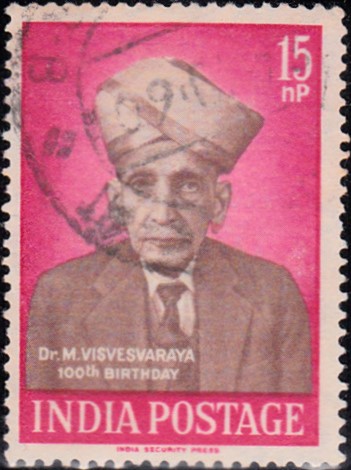
The Bombay Sappers
A commemorative postage stamp on the Bombay Engineer Group : Presentation of Colours 1990 :
 Issued by India
Issued by India
Issued on Feb 21, 1990
Designs : Courtesy the Bombay Engineer Group, Corps of Engineers.
Type : Stamp, Postal Used
Colour : Multi Colour
Denomination : 60 Paise
Overall size : 5.25 x 2.62 cms.
Printing size : 4.90 x 2.45 cms.
Perforation : 13 x 13
Paper : Imported Un W/M Adhesive Gravure Coated Stamp Paper
Number Printed : 15,00,000
Number per issue sheet : 50
Printing Process : Photogravure
Printed : India Security Press
About :
- The Bombay Engineer Group, popularly known as the ‘Bombay Sappers’, is one of the three groups of the Corps of Engineers. The origin of the Group can be traced back to a Company of Pioneer Lascars raised in Bombay in 1777. Recognising the services rendered by the Group during the First World War, the title Royal was awarded to it in 1921. This title was, however, dropped in 1950. Initially organised at Bombay, the Group has been located at Kirkee since 1837.
- The Group has participated in operations in diverse areas in the deserts of Iraq, Iran and Rajasthan, the snowy desolateness of Kashmir, the malaria infested jungles of Burma and Bangladesh, Nagaland, Mizoram and lately in Sri Lanka.
- Within a year of re-organising, the Sappers and Miners were awarded their first Battle Honour, the Beni Boo Ali, in Arabia in 1821. Since then, the Group has given an excellent account of itself with 34 Battle Honours and 25 Theatre Honours during pre-independence period and 2 Battle Honours (Rajauri and Sylhet) and 5 Theatre Honours after independence.
- The first gallantry award given to an Indian Soldier was won by the Group at Ghazni in the first Afghan War, when six Bombay Sappers were awarded the newly established Order of Merit. During the pre-independence period as many as 846 awards were won by the Group, among them 3 Victoria Crosses, 563 and 654 gallant heroes of the Group laid down their lives in the First and Second World Wars, respectively. In the pre-independence period, the Group is accredited with 1 Param Vir Chakra, 1 Ashok Chakra, 9 PVSMs, 4 Kirti Chakras, 22 AVSMs, 7 Vir Chakras and 10 Shaurya Chakras alongwith 117 other gallantry awards.
- The Bombay Sappers have also aided the Civil authorities during natural calamities, coming out commendably in the disasters of the Panshet Dam of June 1961, and Koyna of December 1967. A group of twelve led by a Bombay Sapper on 26 December 1984 has made history by carrying out scientific research for the first time round the year, in the merciless Antarctic continent. ‘Trishna’, the pride of Sappers, sailed around the world in a record 470 days, with four Bombay Sappers on board. The Bombay Sappers are also enviable in the field of sports, having contributed to the National Teams for the Asian Games and the Olympics.
- The Bombay Sappers join the club of the select few, who received colours from the President of India, on 21st Feb 1990.
- Text: Courtesy the Bombay Engineer Group, Corps of Engineers.








[…] Hall and the Bombay Castle. The building was designed and constructed by Major John Hawkins of the Bombay Engineers. The Mint started functioning in the new premises in 1830. Initially it was under the supervision […]
[…] Engineer Group” (Bangalore), “The Bengal Engineer Group” (Roorkee), and “The Bombay Engineer Group” (Kirkee). Of these three the “Madras Engineers Group”, popularly known as the […]
[…] Bombay Engineer Group, popularly known as ‘The Bombay Sappers’, is one of the three Groups of the Corps of Engineers. The origin of the Group can be traced […]